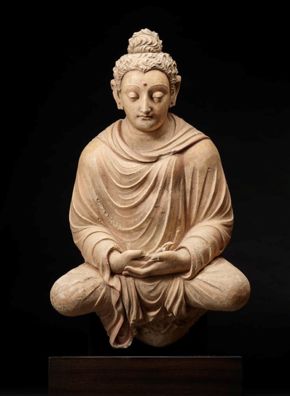The Xuzhou Collection of Buddhist Art

Northern Pakistan, ancient region of Gandhara, Buddha in Meditation, 4th–5th century, stucco, the Xuzhou Collection of Buddhist Art.
Bengal, Buddha Triumphing over Mara, c. 6th–7th century, terracotta, the Xuzhou Collection of Buddhist Art.
Chinese, Buddha Head, 8th century, hollow-core dry lacquer, the Xuzhou Collection of Buddhist Art.
Japanese, Nyoirin Kannon, 1185–1333, gilt bronze, the Xuzhou Collection of Buddhist Art.
Installation view of the Xuzhou Collection
Installation view of the Xuzhou Collection
Installation view of the Xuzhou Collection
Installation view of the Xuzhou Collection
Installation view of the Xuzhou Collection
The Xuzhou Collection of Buddhist Art is a private collection of masterpieces, shown in public for the first time at the Museum of Fine Arts, Houston. The works are on view in the Arts of Asia galleries in the Caroline Wiess Law Building.
The installation presents rare and exceptional sculptures from major Buddhist cultures across the Asian continent over a millennium. Among the highlights are a seated meditating Buddha from ancient Gandhara, today’s northern Pakistan; an eastern Indian narrative panel of a heroic Buddha at the moment of his full awakening; a spectacular Chinese Buddha head in lacquer with inlaid eyes; and a Japanese miniature Bodhisattva of Compassion with six arms, each offering a blessing.
The display highlights unique features of the individual sculptures. Taken together, they tell the life story of the historical Buddha and convey essential tenets of his teaching. The sculptures themselves are recognized as vehicles for enlightenment, as they embody Buddhist insights that are valuable in today’s world.
Xuzhou (pronounced “shoo-joe”) means “empty boat” in Chinese. It evokes the Buddhist metaphor that the Buddha’s teaching is like a raft that one can use to cross over the river of ignorance. Like the raft awaiting its passenger, these vessels remain “empty” until they are activated by an attentive and sympathetic viewer.
